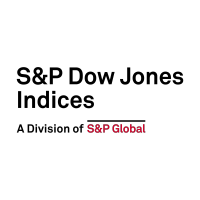S&P DJI’s Global Islamic Equity Benchmarks Rose 13% in H1 2024, Outperforming Conventional Benchmarks
Global equities extended their upward trend into Q2 2024 on the back of sustained economic growth and moderating inflation. The S&P Global BMI posted a healthy 10.4% return in the first half of the year, led by the U.S where the S&P 500® had an impressive run with a 15.3% gain and new record highs….
Exploring Fixed Income’s Passive Potential
Passive investing has historically been more associated with equities than with fixed income, but recent data indicates a change could be in the winds. S&P DJI’s Tim Edwards and Anu Ganti take a closer look at what’s driving the shift and what a passive transformation could mean for fixed income markets.
Time, Trust and Trading
As the bull market in U.S. equities continues, with the S&P 500® up 18% YTD,1 we have witnessed in parallel an extraordinary time in the fixed income markets. Historically low credit spreads have led to the outperformance of high yield bonds relative to corporate bonds and corporate bonds relative to Treasuries. The iBoxx USD High…
Tracking the Emerging Market Yield Landscape with Indices
The iBoxx USD Emerging Markets Broad Overall Indices represent the most comprehensive fixed income hard currency snapshot of the market due to their broad methodology construction. Join S&P DJI’s Anu Ganti and Cboe’s Mandy Xu as they explore why emerging market bonds are coming back into focus for some yield seekers and how these new…
- Categories Fixed Income
- Tags Anu Ganti, corporate bonds, covered bonds, Derivatives, Emerging Market Bonds, emerging markets, fixed income, futures, iBoxx, iBoxx USD Emerging Markets Broad Corporates Index, iBoxx USD Emerging Markets Broad Overall Indices, iBoxx USD Emerging Markets Broad Sovereigns & Sub-Sovereigns Index, iBoxx USD Liquid Emerging Markets Sovereigns & Sub-Sovereigns Index, sovereign bonds, sub-sovereign bonds
- Categories
- Fixed Income
- Tags
- Anu Ganti, corporate bonds, covered bonds, Derivatives, Emerging Market Bonds, emerging markets, fixed income, futures, iBoxx, iBoxx USD Emerging Markets Broad Corporates Index, iBoxx USD Emerging Markets Broad Overall Indices, iBoxx USD Emerging Markets Broad Sovereigns & Sub-Sovereigns Index, iBoxx USD Liquid Emerging Markets Sovereigns & Sub-Sovereigns Index, sovereign bonds, sub-sovereign bonds
S&P DJI’s Global Islamic Equity Benchmarks Rose 9% in the First Quarter, Extending Outperformance against Conventional Benchmarks
Global equities had a strong start to the year as economic resilience and diminishing recession fears boosted risky assets overall. The S&P Global BMI surged 7.8% in the first quarter, led by developed markets; notably, the S&P 500® finished the quarter up 10.6%, at a new record high. Shariah-compliant global benchmarks beat their conventional counterparts,…
Measuring Munis: Using Indices to Assess Yield Opportunities
How are muni indices helping market participants navigate the yield curve in the current climate? S&P DJI’s Jennifer Schnabl and Vanguard’s David Sharp take a closer look at the S&P Intermediate Term National AMT-Free Municipal Bond Index and S&P California AMT-Free Municipal Bond Index.
Turtle Returns: The Hare and the Tortoise
The tale of a footrace between a determined tortoise and a swift but ultimately complacent hare has been with us for a long time. The earliest known version is two and a half thousand years old; it begins with the hare mocking the tortoise’s slow feet, which leads to a challenge and a contest, and…
Navigating Private Credit Liquidity Challenges with Indices
What’s driving insurance companies’ increased allocation to private credit? S&P Global Market Intelligence’s Lynn Bachstetter joins S&P DJI’s Frans Scheepers and State Street Global Advisors’ Bill Ahmuty to explore how indices like the iBoxx Liquid Leveraged Loan Index are helping insurers identify and navigate liquidity challenges in private credit markets.
Bond Beginnings and Beyond
American political consultant James Carville once commented that he’d like to be resurrected as the bond market because, “you can intimidate everyone.” As of July 2023, the global bond market comprises about USD 135 trillion of securities, of which rated corporate debt represents USD 23 trillion.1 U.S. corporate debt makes up roughly half of the…
S&P DJI’s Global Islamic Equity Benchmarks Surged Nearly 12% in the Final Quarter, Outperforming Conventional Benchmarks in 2023
Global equities witnessed a strong Q4 2023 as slowing inflation and the potential for lower interest rates improved market sentiment drastically. The S&P Global BMI rallied 11.4% for the quarter, finishing the year with an impressive 21.9% return. Middle East and North Africa (MENA) equities rose 6.4% in Q4, as measured by the S&P Pan…












